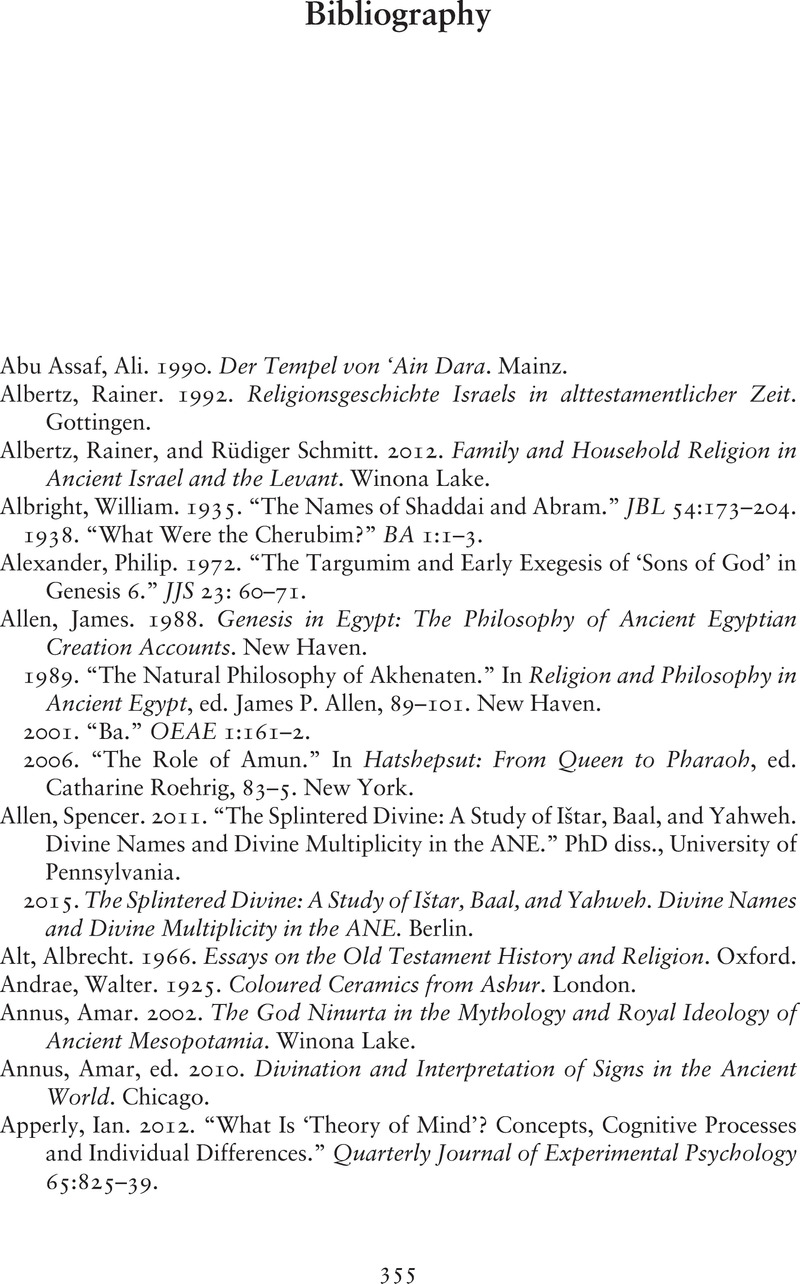Bibliography
Published online by Cambridge University Press: 27 January 2022
Summary

- Type
- Chapter
- Information
- Yahweh among the GodsThe Divine in Genesis, Exodus, and the Ancient Near East, pp. 355 - 394Publisher: Cambridge University PressPrint publication year: 2022

